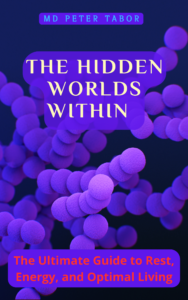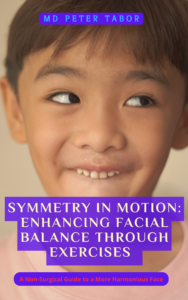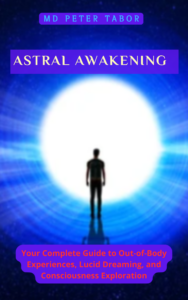—>health.bedscape.com (Main Page) —>Blogposts -Because Your Health is Important
—>Bedscape.com –Become a Warrior in Bed
How physical activity can transform your life
Have you ever stopped to consider the remarkable power that physical activity holds? It’s not just about breaking a sweat or getting in shape; it’s about transforming your entire life. Whether you’re a fitness enthusiast or someone who’s been contemplating adding exercise to your routine, the benefits of physical activity are undeniably extraordinary. From improving your physical health to enhancing your mental well-being, exercise has the potential to revolutionize your life in ways you might not have imagined.
In this blog post, we will explore the numerous benefits of exercise and discuss how incorporating physical activity into your daily routine can lead to a healthier, happier, and more fulfilling life. Embarking on a journey toward a more active lifestyle is an investment in yourself, and the returns are immeasurable. By taking the time to understand the positive impact that physical activity can have on your body and mind, you’ll be motivated to lace up those sneakers and embrace the transformative power of exercise. So, let’s delve into the world of physical activity and uncover the incredible benefits that await those who choose to embrace an active lifestyle.
The Importance of Physical Activity
Before we dive into the significance of physical activity, let’s clarify what it entails. Physical activity refers to any bodily movement that requires energy expenditure, such as walking, jogging, dancing, or participating in sports. Exercise, on the other hand, is a subset of physical activity that is planned, structured, and repetitive, aimed at improving or maintaining physical fitness.
Statistics on sedentary lifestyles and the rise of health issues
In today’s modern society, sedentary lifestyles have become increasingly prevalent, with many individuals spending extended periods sitting at desks, in front of screens, or commuting in vehicles. Unfortunately, this shift towards a more sedentary lifestyle has led to a significant rise in health issues. Consider the following alarming statistics:
- According to the World Health Organization (WHO), physical inactivity is the fourth leading risk factor for global mortality, accounting for 6% of deaths worldwide.
- In many countries, more than 25% of adults and 80% of adolescents do not meet the recommended levels of physical activity.
- Sedentary behavior has been associated with an increased risk of obesity, cardiovascular diseases, type 2 diabetes, certain types of cancer, and mental health disorders.
The link between physical activity and overall well-being
Engaging in regular physical activity is not just about preventing diseases; it has a profound impact on your overall well-being. Here’s how physical activity can positively influence various aspects of your life:
- Physical health: Regular exercise can improve cardiovascular health, strengthen muscles and bones, enhance flexibility and balance, and help with weight management. It reduces the risk of chronic diseases such as heart disease, stroke, type 2 diabetes, and certain types of cancer.
- Mental well-being: Physical activity is closely linked to mental health. It triggers the release of endorphins, which are known as “feel-good” hormones, leading to improved mood and reduced symptoms of depression and anxiety. Exercise also promotes better sleep, boosts self-confidence, and serves as a healthy coping mechanism for stress.
- Cognitive function: Physical activity has a positive impact on cognitive abilities. Research has shown that regular exercise enhances memory, attention span, and overall cognitive function. It can also help prevent age-related cognitive decline and improve academic performance in children and adolescents.
- Energy and productivity: Engaging in physical activity boosts energy levels, improves focus, and enhances productivity. Regular exercise can increase your stamina and provide you with the vitality needed to tackle daily tasks and challenges.
By recognizing the vital connection between physical activity and overall well-being, you can harness the power of exercise to lead a healthier, happier, and more fulfilling life. In the following sections, we will explore the specific physical and mental benefits of exercise in more detail, empowering you to make informed choices about incorporating physical activity into your daily routine.
Self-Transformation Notebook Pack $19
Unlock your potential with this essential $19 bundle of five life-enhancing guides! Ready to thrive? Start here.
- END YOUR SNORING: Snoring isn’t just noisy—it can signal serious health risks like sleep apnea. Discover how to stop it naturally, without surgery, using quick, daily exercises that clear your airways and restore peaceful sleep.
- MASTER YOUR SLEEP: Poor sleep can sap your energy, fog your mind, and weaken your health over time. Master your sleep naturally—no pills needed—with proven habits and routines that unlock deep, refreshing rest tailored to you.
- THE HIDDEN WORDS WITHIN: Your body harbors unseen universes—trillions of microbes shaping your health, mood, and future. The Hidden Worlds Within reveals how these tiny allies in your gut and mouth can falter, fueling chronic illness and mental strain. With practical steps and fermented food recipes, harness their power—no lab required—to thrive from the inside out.
- SYMMETRY IN MOTION: ENHANCING FACIAL BALANCE THROUGH EXERCISES: Discover the secrets to a more balanced face without surgery—through simple exercises, the viral Mewing technique, and everyday habits that reshape your features over time. This book unveils how your jaw, cheeks, and eyes can find harmony, blending science, practical steps, and real stories to guide you toward subtle, confidence-boosting symmetry.
- ASTRAL AVAKENING: YOUR COMPLETE GIUDE TO OUT OF BODY EXPERIENCES, LUCID DREAMING AND CONSCIOUSNESS EXPLORATION: Unlock the secrets of your consciousness and soar into the astral realm with this transformative guide. From mastering out-of-body experiences to weaving their calm and creativity into your daily life, this book offers a 30-day journey to awaken your spirit and explore the unseen. Ready to lift off?
.
Physical and Mental Benefits of Exercise
Physical benefits
- Improved cardiovascular health and reduced risk of chronic diseases: Regular exercise has a profound impact on cardiovascular health. It strengthens the heart muscle, improves circulation, and lowers blood pressure. Engaging in aerobic activities like running, swimming, or cycling helps increase the efficiency of the cardiovascular system, reducing the risk of heart disease, stroke, and other cardiovascular conditions.
- Weight management and increased metabolism: Physical activity plays a crucial role in maintaining a healthy weight. Exercise helps burn calories, contributing to weight loss or weight maintenance. It also boosts metabolism, which is the rate at which your body burns calories at rest. By incorporating regular exercise into your routine, you can achieve a healthy body weight and increase your overall energy expenditure.
- Strengthened muscles and bones: Exercise is essential for building and maintaining strong muscles and bones. Resistance training, such as weightlifting or bodyweight exercises, helps increase muscle mass and strength. This not only improves physical performance but also reduces the risk of age-related muscle loss. Weight-bearing exercises like walking or running promote bone hea
Mental benefits
- Boosted mood and reduced symptoms of depression and anxiety: Exercise has a profound impact on mental well-being. It stimulates the release of endorphins, which are natural mood elevators. Regular physical activity can reduce symptoms of depression and anxiety, improving overall mental health. Engaging in exercise with others or in a social setting can also provide social support and a sense of belonging, further enhancing mood and emotional well-being.
- Increased cognitive function and improved memory: Physical activity positively affects cognitive function and brain health. Regular exercise has been shown to improve cognitive abilities, including memory, attention, and problem-solving skills. It promotes neuroplasticity, the brain’s ability to adapt and form new connections, which is crucial for learning and memory retention. Additionally, exercise increases blood flow and oxygen delivery to the brain, enhancing its function.
- Enhanced stress management and relaxation: Exercise is a natural stress reliever. It helps reduce the production of stress hormones like cortisol and stimulates the production of endorphins, promoting relaxation and a sense of well-being. Engaging in physical activity provides an outlet for pent-up energy and tension, allowing for better stress management. Activities such as yoga, tai chi, or mindfulness-based exercises combine physical movement with mental relaxation techniques, offering additional stress-reducing benefits.
Types of Physical Activities
Aerobic exercises
- Walking, jogging, and running: Walking, jogging, and running are simple yet effective aerobic exercises that can be easily incorporated into your daily routine. They improve cardiovascular health, increase stamina, and help burn calories. Start with a brisk walk and gradually increase the intensity to jogging or running, based on your fitness level and goals.
- Swimming and cycling: Swimming and cycling are low-impact exercises that provide excellent cardiovascular benefits. Swimming is a full-body workout that improves endurance, flexibility, and muscle strength. Cycling, whether outdoors or on a stationary bike, is an enjoyable way to boost heart health, strengthen leg muscles, and enhance overall fitness.
- Dancing and aerobics: Dancing and aerobics classes offer a fun and dynamic way to improve cardiovascular fitness. From high-energy Zumba classes to dance styles like salsa or hip-hop, these activities not only elevate heart rate and burn calories but also enhance coordination, balance, and flexibility.
Strength training
- Weightlifting and resistance exercises: Weightlifting and resistance exercises involve using weights or resistance bands to build strength and muscle mass. These activities can be performed at a gym or at home with proper equipment. Weightlifting targets specific muscle groups, whereas resistance exercises utilize your body weight or resistance bands for resistance. Both types of training help increase muscle strength, improve bone density, and boost metabolism.
- Bodyweight exercises: Bodyweight exercises use your own body weight as resistance. They can be performed anywhere without the need for equipment. Examples include push-ups, squats, lunges, planks, and burpees. Bodyweight exercises improve overall strength, enhance muscular endurance, and promote functional fitness.
- Yoga and Pilates: Yoga and Pilates focus on body awareness, flexibility, and core strength. Yoga combines physical postures (asanas) with breathing techniques and meditation, promoting relaxation and flexibility. Pilates emphasizes core stability, alignment, and controlled movements. Both practices improve posture, increase flexibility, and enhance mind-body connection.
Flexibility and balance exercises
- Stretching and yoga: Stretching exercises increase flexibility, improve joint range of motion, and help prevent injuries. Incorporating stretching into your exercise routine or dedicating separate sessions for stretching can have long-term benefits. Yoga, mentioned earlier, also includes various stretching poses that improve flexibility and balance.
- Tai Chi and Qigong: Tai Chi and Qigong are ancient Chinese practices that focus on slow, deliberate movements, breathing techniques, and mental concentration. These exercises improve balance, coordination, and overall well-being. They are especially beneficial for older adults, as they help reduce the risk of falls and enhance mindfulness.
- Balance training exercises:Balance training exercises are designed to improve stability and reduce the risk of falls. They can include standing on one leg, using balance boards, or participating in activities like Tai Chi or yoga poses that challenge balance. Incorporating these exercises into your routine can enhance proprioception and overall balance.
HIIT Training: High-Intensity Interval Training
High-Intensity Interval Training (HIIT) has gained significant popularity in recent years due to its effectiveness in maximizing workout benefits in a short amount of time. This form of exercise involves alternating between intense bursts of activity and short recovery periods. HIIT workouts are known for their efficiency, calorie-burning potential, and ability to improve cardiovascular fitness.
Key aspects and benefits of HIIT training
- How it works: HIIT involves pushing your body to its maximum effort during short bursts of intense exercise, typically lasting from 20 seconds to a few minutes. These high-intensity intervals are alternated with brief periods of active recovery or complete rest. The cycle is repeated for a predetermined number of sets, typically ranging from 4 to 10, depending on your fitness level and goals.
- Time efficiency: One of the primary advantages of HIIT is its time-saving nature. Traditional cardio exercises, like long-distance running or cycling, can take up a significant portion of your workout time. With HIIT, you can achieve similar or even greater cardiovascular benefits in a fraction of the time. HIIT workouts usually last between 10 to 30 minutes, making them ideal for individuals with busy schedules.
- Calorie burning and fat loss: HIIT workouts are highly effective for burning calories and promoting fat loss. The intense bursts of activity during HIIT sessions require a substantial amount of energy, resulting in an increased metabolic rate even after the workout. This post-workout calorie burn, known as the afterburn effect or excess post-exercise oxygen consumption (EPOC), can continue for several hours, aiding in fat burning and weight management.
- Cardiovascular fitness: HIIT is excellent for improving cardiovascular endurance and overall heart health. The intense intervals challenge your cardiovascular system, forcing it to adapt and become more efficient. Over time, regular HIIT workouts can lead to increased oxygen uptake, improved heart function, and enhanced endurance capacity.
- Muscle building and preservation: Despite its focus on cardiovascular fitness, HIIT can also help build and preserve muscle mass. The high-intensity exercises stimulate muscle fibers, promoting muscle growth and strength development. Additionally, the body’s natural release of growth hormone during HIIT workouts contributes to muscle-building effects.
- Versatility and variety: HIIT workouts offer a wide range of exercises and formats, allowing for versatility and variety. You can incorporate bodyweight exercises, cardio machines, resistance training, plyometrics, or a combination of different exercises into your HIIT routine. This variety helps prevent boredom, keeps the workouts challenging, and targets different muscle groups.
- Adaptability to different fitness levels: HIIT workouts can be customized to accommodate different fitness levels. You can adjust the intensity, duration, and rest intervals based on your current fitness level and gradually increase the intensity as you progress. Beginners can start with lower-intensity intervals and longer rest periods, gradually building up their stamina and endurance.
It’s important to note that HIIT is a demanding form of exercise, and it may not be suitable for everyone. If you have any underlying health conditions or concerns, it’s advisable to consult with a healthcare professional before incorporating HIIT into your routine.
HIIT training offers a time-efficient, challenging, and effective way to improve cardiovascular fitness, burn calories, and promote overall well-being. By incorporating HIIT workouts into your exercise regimen, you can experience the benefits of this dynamic training approach. Remember to warm up properly, listen to your body, and gradually increase the intensity as you become more comfortable with the workouts.
Tips for Incorporating Physical Activity into Your Routine
Setting realistic goals and starting gradually
- Define your goals: Determine what you want to achieve through physical activity, whether it’s improving cardiovascular fitness, losing weight, increasing strength, or reducing stress. Setting specific and realistic goals will help you stay focused and motivated.
- Start small: Begin with manageable activities and gradually increase the duration and intensity. This approach allows your body to adapt and reduces the risk of injury or burnout. For example, start with a 10-minute walk and gradually increase it to 30 minutes or more.
Finding activities that you enjoy
- Explore different options: Try various types of physical activities to find what you enjoy the most. Experiment with different sports, fitness classes, outdoor activities, or home workouts. When you enjoy the activity, it becomes easier to incorporate it into your routine.
- Mix it up: Avoid monotony by incorporating a variety of exercises into your routine. This helps prevent boredom and keeps you engaged. Alternate between cardio workouts, strength training, flexibility exercises, and activities that challenge different muscle groups.
Making exercise a social activity
- Find a workout buddy: Exercising with a friend or family member can make physical activity more enjoyable and motivating. It provides accountability and creates an opportunity for social interaction.
- Join group classes or sports teams: Participating in group classes or joining sports teams can be a great way to meet like-minded individuals and make exercise a social event. The camaraderie and support from others can boost your motivation and make workouts more enjoyable.
Incorporating physical activity into daily tasks
- Walk or bike for transportation: Whenever possible, choose active transportation options such as walking or cycling instead of driving. It not only adds physical activity to your day but also helps reduce your carbon footprint.
- Take active breaks: Incorporate short bursts of physical activity into your day. Stand up and stretch regularly, take the stairs instead of the elevator, or do a quick set of squats or lunges during work breaks.
Staying consistent and overcoming obstacles
- Schedule it in: Treat physical activity as an important appointment by scheduling it into your daily or weekly calendar. Prioritize your exercise time and stick to the schedule as much as possible.
- Overcome barriers: Identify potential obstacles that may hinder your physical activity routine, such as lack of time, fatigue, or weather conditions. Find creative solutions to overcome these barriers, such as waking up earlier, finding indoor workout options, or breaking your workouts into shorter sessions throughout the day.
- Be flexible: Life can be unpredictable, and there may be days when your planned exercise routine is disrupted. Instead of giving up entirely, be flexible and find alternative ways to be active, even if it means adjusting your workout schedule or trying a different activity.
- Track your progress: Keep a record of your physical activity to track your progress and celebrate your achievements. This can be as simple as noting your workouts in a journal or using a fitness tracking app. Seeing your improvements can boost your motivation and help you stay consistent.
Incorporating physical activity into your routine is a commitment to your overall health and well-being. By implementing these tips and finding strategies that work for you, you can establish a sustainable and enjoyable exercise routine that becomes a natural part of your lifestyle. Remember, every step counts, and small changes can lead to significant long-term benefits.
Overcoming Barriers to Exercise
Lack of time and busy schedules
- Prioritize and schedule: Make physical activity a priority by setting aside dedicated time for exercise in your daily or weekly schedule. Treat it as a non-negotiable appointment and commit to sticking to it.
- Break it down: If finding a large chunk of time for exercise seems challenging, break your workouts into smaller, more manageable sessions. For example, you can do three 10-minute sessions throughout the day instead of one continuous 30-minute workout.
- Multitask: Look for opportunities to incorporate physical activity into your daily routine. For instance, take the stairs instead of the elevator, do squats or lunges while watching TV, or stretch during phone calls.
Physical limitations and health conditions
- Consult a healthcare professional: If you have physical limitations or underlying health conditions, consult with a healthcare professional before starting an exercise program. They can provide guidance on suitable activities and any necessary modifications.
- Seek specialized guidance: Consider working with a certified fitness professional or physical therapist who can create a personalized exercise plan tailored to your specific needs and limitations.
- Explore low-impact options: If high-impact exercises are not suitable, explore low-impact activities such as swimming, cycling, yoga, or tai chi. These activities are gentle on the joints while still providing numerous health benefits.
Motivation and accountability
- Set meaningful goals: Establish specific and achievable goals that align with your interests and values. Having clear objectives gives you something to work towards and keeps you motivated.
- Find your motivation: Identify what motivates you personally. It could be improved health, increased energy, stress relief, or a desire to participate in a particular event. Use these motivations as reminders when you face challenges or lack motivation.
- Find an accountability partner: Partnering with someone who shares your fitness goals can provide the necessary accountability and support. You can exercise together, share progress updates, or even join fitness challenges or groups for added motivation.
- Reward yourself: Celebrate milestones and achievements along your fitness journey. Rewarding yourself with non-food treats, such as a massage, a new workout outfit, or a day off, can reinforce positive behaviors and help maintain motivation.
Weather and environmental factors
- Indoor options: If weather conditions or air quality hinder outdoor activities, explore indoor exercise options. This could include joining a gym, using home workout videos or apps, or participating in indoor sports or fitness classes.
- Adapt to the weather: When weather permits, adapt your exercise routine to the conditions. For example, during hot summer months, opt for early morning or evening workouts when temperatures are cooler. In cold weather, dress in layers to stay warm, or try winter activities like skiing or snowshoeing.
- Embrace alternative activities: If outdoor conditions are not suitable, find alternative activities that can be done indoors. This might include dancing, indoor cycling, yoga, or bodyweight exercises. Be open to trying new activities that keep you active regardless of the weather.
Overcoming barriers to exercise requires determination, flexibility, and a willingness to adapt. By implementing these strategies, you can overcome common obstacles and maintain a consistent exercise routine. Remember, small steps towards progress are still steps forward, and the long-term benefits of regular physical activity are worth the effort.




